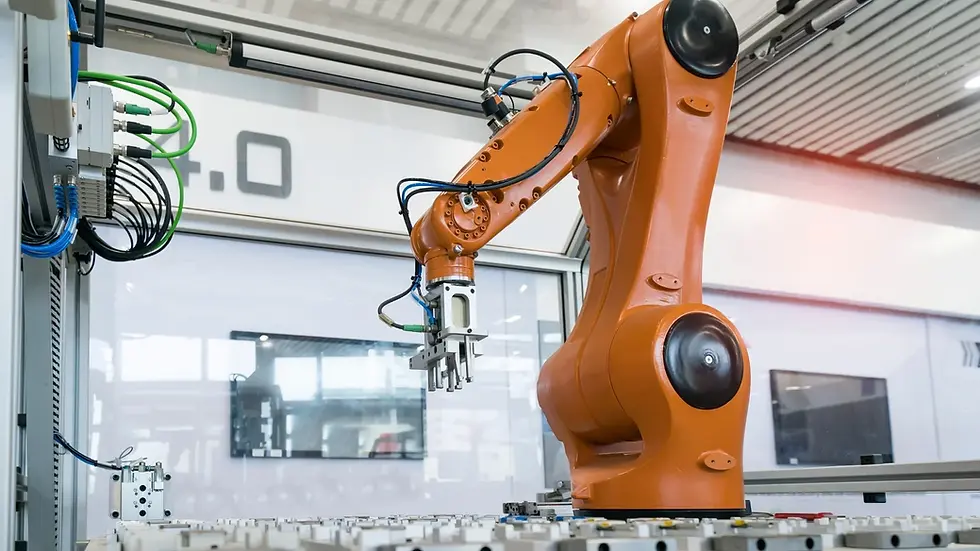How Robots and Cobots Are Transforming Production Lines
- DelaControl
- 5 days ago
- 2 min read
Industrial robots have become essential to modern manufacturing, from automotive plants to food factories, driving efficiency, quality, and resilience. Collaborative robots, known as cobots, offer a flexible, accessible option for businesses of all sizes. Together, they are redefining automation, with global installations reaching 553,000 units in 2023 (International Federation of Robotics).
Boosting Efficiency and Output
Industrial robots excel in speed and endurance, operating 24 hours a day without fatigue. They perform repetitive tasks faster than human workers, reducing cycle times and boosting throughput by 10–20% in sectors like automotive and electronics. For example, in car manufacturing, robots cut assembly times by up to 40%, ensuring predictable schedules and meeting high-volume demand in industries such as packaging.
Improving Product Quality
Robots deliver consistent precision in tasks like welding, assembly, painting, and inspection, reducing defect rates by 80–90% in electronics manufacturing. Automated quality checks, often using vision systems, ensure compliance with standards like ISO 9001, minimising waste and enhancing customer satisfaction across production runs.
Enhancing Workplace Safety
Robots handle dangerous or physically demanding tasks, such as heavy lifting or chemical exposure, reducing workplace injuries by 25% in high-risk environments (per OSHA data). This supports compliance with safety standards like ISO 45001. Cobots, with force-limiting sensors (per ISO/TS 15066), further enhance safety by working alongside humans without barriers.
The Rise of Cobots in Factories
Cobots, designed to collaborate safely with humans, use sensors to prevent accidents, making them ideal for shared workspaces. They offer key benefits:
Adapt quickly to new tasks, supporting short production runs in consumer goods or medical device manufacturing.
Cost £20,000–£50,000, making automation accessible to small and medium-sized enterprises (SMEs).
Free workers for creative or problem-solving tasks, while handling repetitive or ergonomically challenging work.
For example, in medical device manufacturing, cobots assemble precision components, adapting to new designs in hours. Cobots are vital in sectors requiring rapid adaptation, such as electronics.
Shaping Workforce Skills
Robots and cobots reduce manual labour in repetitive tasks but increase demand for technical skills, such as robot programming (e.g., RAPID or KRL) and maintenance. By 2027, 60% of manufacturing roles will require automation skills (World Economic Forum). Training programmes from suppliers like Universal Robots or FANUC help businesses upskill workers, ensuring they benefit from automation without job losses.
Cost and Long-Term ROI
Robots and cobots are more affordable than ever, with industrial robots delivering ROI within 1–2 years through 20% efficiency gains and reduced waste. Cobots, costing less than traditional robots, offer agility for SMEs, with leasing options lowering barriers. Fewer safety incidents and lower defect rates drive long-term savings, enabling manufacturers to adapt to market shifts. Automation also supports sustainability, cutting material waste by 10–15%.
Conclusion
Robots and cobots are transforming production lines across manufacturing sectors. Industrial robots provide speed, strength, and precision, while cobots offer flexibility, accessibility, and collaboration. Together, they improve efficiency, safety, and quality, while reducing waste to meet sustainability goals. As AI and IoT integrate with robotics, production lines will become smarter and more adaptive. Manufacturers should invest in automation and workforce training now to gain a competitive edge in the global marketplace.







